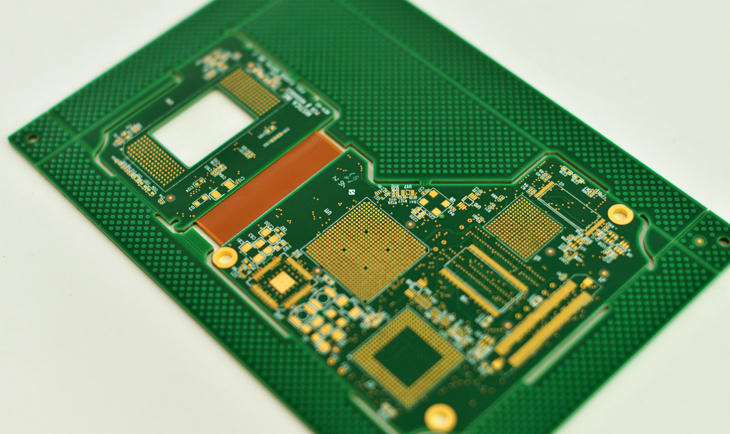Embedded Capacitor PCB:
With the rapid development of technology, electronic devices increasingly demand high levels of function integration and space utilization. Embedded Capacitor PCB (Printed Circuit Board) technology is becoming a significant trend in electronic design. It involves integrating capacitors within the internal layers of the PCB, offering a unique solution that meets modern electronic devices' needs for high performance and compact design.
Embedded Board is a computer hardware embedded in the device for control and data processing. The following is a detailed introduction to embedded boards:
1.What is an Embedded Capacitor PCB?
An embedded capacitor PCB is a technology that integrates capacitors within the internal layers of a PCB. This design places capacitors within the board's layers rather than on the surface or in through-hole positions. Capacitors are sandwiched between insulating layers, thus avoiding the use of external space and reducing interference with other circuit components.
Advantages of Embedded Capacitor PCB:
(1) Space Savings: One of the main advantages of embedded capacitors is the significant reduction in space. By integrating capacitors inside the PCB, the need for external components is minimized, resulting in a more compact design. This is particularly crucial for modern electronic devices that require high levels of integration, such as smartphones and tablets.
(2) Enhanced Circuit Performance: With capacitors embedded internally, the signal paths are shorter, reducing signal loss and electromagnetic interference. This design improves circuit stability and performance, making devices perform better under high-speed operations.
(3) Optimized Thermal Management: Embedded capacitor PCBs help optimize thermal management. By placing capacitors within the PCB, heat buildup is reduced, thereby lowering the risk of overheating. This design is particularly important for high-power applications, helping to maintain device stability and extend its lifespan.
2.Advantages of Embedded Capacitor PCB
(1)Space Savings: One of the main advantages of embedded capacitors is the significant reduction in space. By integrating capacitors inside the PCB, the need for external components is minimized, resulting in a more compact design. This is particularly crucial for modern electronic devices that require high levels of integration, such as smartphones and tablets.
(2) Enhanced Circuit Performance: With capacitors embedded internally, the signal paths are shorter, reducing signal loss and electromagnetic interference. This design improves circuit stability and performance, making devices perform better under high-speed operations.
(3)Optimized Thermal Management: Embedded capacitor PCBs help optimize thermal management. By placing capacitors within the PCB, heat buildup is reduced, thereby lowering the risk of overheating. This design is particularly important for high-power applications, helping to maintain device stability and extend its lifespan.

Embedded Capacitance PCB
3.Basic Composition and Functions
(1) CPU Board: The core of an embedded motherboard is the CPU board, which is responsible for executing instructions and processing data. The CPU board can be onboard (e.g., ARM board) or installed via a CPU slot (e.g., X86 board).
(2)High Integration: Embedded motherboards typically feature high integration, with small size and low power consumption to meet the needs of various embedded devices.
4.Classification
(1) X86-Based Embedded Motherboards: These use X86 chips from companies like Intel, VIA, AMD, or others. This type of motherboard is often used for traditional computing applications.
(2)RISC-Based ARM Embedded Motherboards: These use ARM's RISC architecture chips. They are widely used in various smart devices, such as smartphones, tablets, and smart home applications.
5.Characteristics
(1) Size and Power Consumption: Embedded motherboards have strict requirements for size and power consumption to fit different application scenarios.
(2) Interfaces and I/O: Depending on specific needs, embedded motherboards offer various interfaces and I/O options, such as LAN, VGA, USB, serial ports, etc.
(3)Packaging Technology: With technological advancements, packaging technologies have progressed, including 3D packaging technologies (stacked packaging, System-in-Package (SiP), Package-on-Package (PoP)), enhancing integration and performance.
6.Applications and Importance
(1) Internet of Things (IoT): Embedded circuit boards are widely used in the IoT field, such as in smart homes, industrial automation, and intelligent transportation.
(2) Communication Protocols: Common communication protocols include CAN bus, WiFi, Bluetooth, etc., for enabling data communication and network connectivity between devices.
7.Design and Considerations
(1)Printed Circuit Board (PCB): The PCB serves as the foundational platform for supporting all electronic components and achieving electrical connections. Design considerations include routing density, signal integrity, power distribution, thermal management, and mechanical strength.
(2)Hardware Reliability: Embedded systems require high hardware reliability; thus, the choice and design of circuit boards and packaging must ensure system stability and long-term reliability.
8.Examples
(1)CMS-4551 (COM) Embedded Module: Measuring 146mm x 80mm, it features low power consumption, shock resistance, and is suitable for mobile applications.
(2)Arduino: A popular microcontroller board used for programming enthusiasts and prototype development.
(3)ESP32 MCU Board: Offers various connectivity options (e.g., low-power Bluetooth, Wi-Fi) and is suitable for IoT projects.
iPCB shares embedded capacitor PCB are core components of embedded systems, characterized by high integration, small size, and low power consumption. They are widely used in various smart devices and systems. Choosing the right circuit board and design is crucial for ensuring stable and efficient operation of embedded systems.